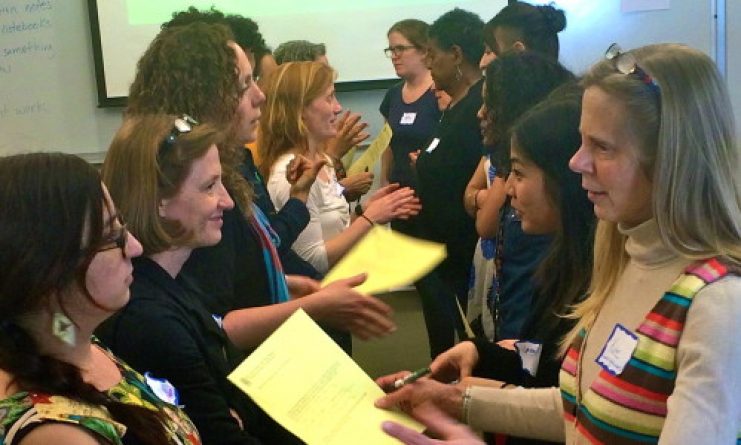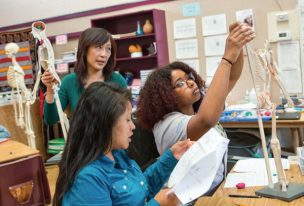
The Power of the Collective
Is This Making a Difference for Students?
Researcher John Hattie’s latest meta-analysis of factors that influence student achievement has some new and familiar insights into the question of what makes a difference for student learning. His overall findings might be surprising to some; more than socioeconomic status, teacher feedback, teacher-student relationship, and a host of other factors that one might expect to have a substantial impact on how well students do in school, Hattie found that by far the single strongest influencer of student achievement is collective teacher efficacy.
 What is Collective Teacher Efficacy?
What is Collective Teacher Efficacy?
Collective teacher efficacy refers to the belief that through their collective action educators can make a difference in student learning. Teachers with a strong sense of collective efficacy believe that by collaborating with their colleagues they can help to improve student achievement. These teachers show a greater persistence in their practice and willingness to try new teaching approaches, they set more challenging goals for themselves and their students, and they attend more closely to the needs of students who require more assistance. A sense of collective efficacy is one of the most powerful ideas that we can foster in our school communities.
How Does Mills Teacher Scholars Foster a Sense of Collective Efficacy?
Research points to several major conditions that enable a sense of collective efficacy.
- One is structured opportunities for teachers to engage in meaningful collaboration toward clear and attainable common goals.
Using powerful protocols for collaborative learning conversations, our Mills Teacher Scholar inquiry sessions support teachers to engage in goal setting, examination of student work, reflection, and articulation of next steps.
- Another condition is the opportunity for teacher leadership. When teachers have the opportunity to influence important school-site decisions about curriculum, teaching and learning, and professional development, they gain a stronger sense of collective efficacy.
Mills Teacher Scholars encourages teacher leadership within our inquiry groups by mentoring teachers to serve as supportive models for their colleagues and to gradually take on more aspects of the inquiry facilitation.
- Yet another condition for collective efficacy is responsive leadership. When leaders identify and respond to the needs of teachers they encourage a sense of collective teacher efficacy.
Mills Teacher Scholars supports responsive leadership both by raising teachers’ voices and by working with school and district leaders to articulate and develop a vision for teacher learning and collaboration. Through our partnerships we model a listening stance, where we reflect on and respond to the learning needs of our partners.
What more can we do to encourage collective efficacy?
In addition to our work described above, this year we will be paying close attention to what more we can do to develop a sense of collective efficacy for our partner groups. Through an initial pre-survey, we are gathering baseline data about our Teacher Scholars’ sense of collective efficacy. We are planning more deliberate opportunities for our Teacher Scholars to reflect on their shared goals and to highlight their progress toward these goals.
If you would like to read more about collective efficacy, you can find informative articles here and here.

